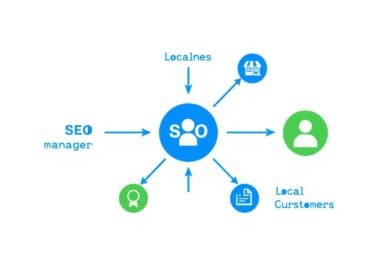How Responsive Web Design is Crucial for Your SEO Efforts

Table of Content
Every morning, I see Aussies using their phones, tablets, and laptops to browse websites. The digital world has changed a lot. Businesses must now focus on responsive web design for SEO.
Our online presence needs to be flexible and easy to use on all devices. This ensures a smooth experience for everyone.
Responsive web design is more than just a buzzword. It’s key to success in the digital age. When your site fits every screen perfectly, you’re not just making it easier for users. You’re also telling search engines you care about quality.
Search engines like Google give high marks to sites that are easy to use. A responsive design means your site loads fast, people stay longer, and they’re more likely to engage. These are all important for your ranking in search results.
Key Takeaways
- Responsive design is essential for modern digital strategies
- Mobile-friendly websites rank higher in search results
- User experience directly influences SEO performance
- Adapting to multiple device sizes increases website accessibility
- Technical excellence drives search engine visibility
Need help making your website better? Contact hello@defyn.com.au. We’re here to boost your online presence.
Understanding the Fundamentals of Responsive Web Design
Responsive web development has changed how websites look on different devices. It’s now key for businesses to have websites that work well on all screens. This is not just a nice-to-have, it’s a must for success online.
We focus on making websites that work great on many platforms. Knowing the basics is vital for making websites that perform well.
Core Principles of Responsive Web Design
- Fluid grid systems that adapt to screen dimensions
- Flexible image scaling
- Dynamic media queries
- Adaptive content layouts
Key Components of Responsive Design
Responsive web development needs a few important parts:
- Scalable typography
- Touch-friendly navigation
- Performance-optimized graphics
- Cross-device compatibility
Technical Requirements for Implementation
To make responsive design work, you need certain skills and tools:
| Technology | Purpose | Key Benefit |
|---|---|---|
| HTML5 | Semantic Structure | Enhanced Accessibility |
| CSS3 | Layout Flexibility | Responsive Styling |
| JavaScript Frameworks | Interactive Elements | Dynamic User Experience |
“Responsive design is not just about fitting content to different screens, but creating an optimal viewing experience across devices.” – Web Design Expert
By mastering these responsive web design in sydney tips, businesses can ensure their digital presence remains cutting-edge and user-friendly.
The Direct Impact of Mobile-First Indexing on SEO Rankings
Google’s mobile-first indexing has changed the digital world for mobile-friendly websites. Now, search engines look at the mobile version of websites first when ranking them. For Australian businesses, it’s key to keep up with this change to stay ahead in SEO.
“Mobile-first indexing isn’t just a trend—it’s the new standard for digital visibility.” – Digital Marketing Experts
Responsive web design is now a must for SEO. Websites that don’t adapt risk losing visibility in search engines. Your mobile site is now the main source for ranking signals.
- Mobile page loading speed impacts search rankings
- Content consistency across desktop and mobile versions
- Mobile user experience determines search performance
Key ranking factors for mobile responsive websites include:
| Ranking Factor | Mobile Impact |
|---|---|
| Page Speed | Critical for mobile indexing |
| Responsive Design | Essential for user experience |
| Content Parity | Must match across devices |
Businesses need to focus on mobile responsiveness to stay ahead online. Adaptive design is no longer optional—it’s fundamental to SEO success.
Why Google Prioritises Mobile-Friendly Websites
The way we use the internet has changed a lot. Now, most people use their phones to browse online. This is why making websites that work well on phones is key for businesses to succeed.
In Australia, more and more people use their phones to go online. They use phones to shop, check out websites, and talk to brands.
Mobile Usage Statistics in Australia
Here’s why making websites work on phones is so important:
- Over 81% of Australians own a smartphone
- Mobile devices account for 55% of web traffic
- Average Australian spends 5.5 hours daily on mobile devices
Google’s Mobile-First Algorithm Updates
Google has made big changes to how it ranks websites. Now, it looks at how well websites work on phones first.
| Year | Algorithm Update | Key Impact |
|---|---|---|
| 2015 | Mobile-Friendly Update | Introduced mobile-friendliness as ranking signal |
| 2018 | Mobile-First Indexing | Prioritized mobile version of websites |
| 2021 | Page Experience Update | Integrated Core Web Vitals for mobile performance |
Performance Metrics That Matter
Google checks websites on phones with three main things:
- Largest Contentful Paint (LCP): Measures how fast a page loads
- First Input Delay (FID): Checks how well a page responds to user input
- Cumulative Layout Shift (CLS): Looks at how stable the page is
“A mobile-responsive website is no longer optional—it’s essential for digital survival in the Australian market.” – Digital Marketing Experts
By focusing on these areas, businesses can make their websites better. This helps them get more visitors and keep people interested.
Essential Elements of Mobile Responsive Website Design
Responsive web design is key for businesses wanting to engage users on all devices. It makes websites flexible, adapting to different screens and user actions.
Important parts of good responsive web design for SEO are:
- Fluid Grid Layouts
- Flexible Image Scaling
- Adaptive Typography
- Touch-Friendly Navigation
Designers must focus on content order and keep things clear on all devices. This means arranging info well to keep it easy to read and fun to use, no matter the screen size.
“Responsive design isn’t just about looking good—it’s about creating an intuitive user experience that works everywhere.”
For responsive web development, we consider:
- Using CSS media queries
- Viewport meta tags
- Optimising for mobile networks
- Ensuring it works on all browsers
We aim to make websites that are fast, efficient, and work well on phones, tablets, and computers.
How Responsive Design Improves User Experience Signals
Responsive web design is key for better SEO and user experience. Today’s websites need to work well on all devices to keep users interested.
User experience signals are important for search engines to judge website quality. A good responsive design helps a lot with these signals.
Bounce Rate Reduction Strategies
Here are some tips for reducing bounce rates with responsive design:
- Make sure the layout looks the same on all devices
- Keep websites fast to load
- Make navigation easy to use
- Make content easy to read
Time on Site Enhancement
Responsive designs keep users engaged for longer. Here’s how:
- Adjust content to fit different screens
- Add interactive design features
- Make scrolling smooth
Conversion Rate Optimisation
| Design Element | Conversion Impact |
|---|---|
| Mobile-friendly forms | +35% conversion rate |
| Touch-friendly buttons | +25% engagement |
| Streamlined checkout | +40% purchase rate |
“User experience is the silent language of successful digital interactions.” – Digital Design Expert
Strategic responsive design changes how users interact with websites. It creates valuable digital experiences that both users and search engines value.
Common Responsive Web Design Mistakes to Avoid

Responsive web design is complex and needs careful attention. Many businesses make mistakes that hurt their online presence. These errors can be costly.
Our team has found key mistakes that can harm your responsive web design tips:
- Overlooking mobile performance optimization
- Implementing incorrect media queries
- Neglecting touch-friendly navigation
- Failing to compress and optimize images
“A responsive website isn’t just about looking good—it’s about delivering seamless user experiences across all devices.”
Responsive web design requires smart planning. Mistakes like hiding content or using wrong redirects can hurt your site’s visibility.
Here are some tips to avoid these mistakes:
- Start with mobile design
- Test your site on different devices
- Make images load faster
- Keep content easy to access
By tackling these challenges, Australian businesses can make websites that work well everywhere. This makes for a better user experience.
Implementing Responsive Images for Better SEO Performance
Visual content is vital in responsive web design. Making images work well is essential for a mobile-friendly site. It ensures a great user experience and boosts SEO.
Images can slow down websites and affect user interest. But, with the right approach, they can change how people view your content on various devices.
Image Optimization Techniques
- Compress images without losing quality
- Use modern file formats like WebP
- Implement lazy loading strategies
- Select appropriate image dimensions for different screens
Responsive Image Markup Best Practices
Good responsive web design needs smart image use. Here are some technical tips:
| Technique | SEO Impact |
|---|---|
| srcset attribute | Provides multiple image resolution options |
| Picture element | Enables art direction and device-specific images |
| Size attribute | Helps browsers predict image display size |
“Smart image optimization is not just about reducing file size, but delivering the right visual experience for each user’s device.” – Web Performance Expert
Using these image strategies, businesses can make websites that load fast, engage users, and rank well in search results.
Mobile Page Speed and Its SEO Implications
In the world of responsive web development, mobile page speed is key for SEO success. Google’s algorithms now favor websites that load fast and offer smooth mobile experiences. Slow pages can hurt your search rankings and how users interact with your site.

Responsive web design for SEO means your mobile site must be super fast. Sites that take over three seconds to load might lose customers and search engine visibility.
“Speed is not just a feature. It’s the most important feature.” – Sundar Pichai, Google CEO
Key Factors Affecting Mobile Page Speed
- Server response time
- Image optimization
- Browser caching
- Minified CSS and JavaScript
- Reduced server-side processing
Our team suggests several ways to boost mobile page speed:
- Compress and optimize images
- Leverage browser caching
- Minimize render-blocking resources
- Use content delivery networks (CDNs)
Tools like Google’s PageSpeed Insights help find and fix speed issues in responsive web development. By following these tips, Australian businesses can greatly improve their SEO and user experience.
Testing Tools for Responsive Web Design
Creating a responsive web design in Sydney needs strong testing methods. This ensures it works well on many devices and platforms. We’ll look at key tools for checking and improving responsive design.
Good responsive web design starts with thorough testing. Our team suggests a detailed approach to check website performance and user experience.
Google’s Mobile-Friendly Test
Google has a free tool for checking mobile responsiveness. It checks if your website works well on mobile and shows problems that might affect users.
- Quick and easy website analysis
- Instant mobile usability feedback
- Identifies specific mobile optimization challenges
Cross-Browser Testing Solutions
It’s important to make sure your website works the same on different browsers. Using various platforms lets developers test on many devices.
| Testing Platform | Key Features | Price Range |
|---|---|---|
| BrowserStack | Real device testing | $39-$99/month |
| Sauce Labs | Comprehensive browser coverage | $50-$150/month |
| LambdaTest | Cross-browser compatibility | Free-$99/month |
Performance Monitoring Tools
Keeping an eye on your website’s performance is key. Special tools track important metrics and offer useful tips.
- Google PageSpeed Insights
- GTmetrix
- Pingdom Website Speed Test
“Responsive design isn’t just about looking good—it’s about delivering an exceptional user experience across all devices.”
Using these testing tools, businesses can make websites that work well on many devices. This improves user happiness and search rankings.
Responsive Design Implementation Strategy for Australian Businesses
Creating a strong responsive web design strategy in Sydney needs careful planning and understanding of the local market. Australian businesses must have a strategic approach to responsive web development. This approach should tackle the unique challenges of the digital landscape.
- Conduct a thorough mobile-first website audit
- Analyze how Australians browse online
- Choose the right responsive frameworks
- Improve local search performance
“In the digital age, responsive design isn’t just a feature—it’s a business necessity for Australian enterprises.”
When developing responsive websites, businesses should focus on:
- Device Compatibility: Making sure it works well on phones, tablets, and computers
- Local User Experience: Designing for what Australian consumers like
- Performance Optimization: Keeping websites fast and easy to use
Choosing the right technology is key. Australian companies should pick platforms that support responsive design in Sydney. They should also be flexible for future changes in the digital world.
By using these strategies, companies can build responsive websites. These websites will meet technical standards and offer great user experiences for the Australian digital world.
Conclusion
Responsive web design is now essential for businesses wanting to succeed online. It greatly affects search engine rankings, user experience, and digital performance.
In Australia, having a mobile-friendly website is key for digital marketing. Responsive design improves search visibility, lowers bounce rates, and ensures a smooth user experience on all devices.
Responsive design can be tricky to handle. At Defyn Digital, we create websites that are adaptive and meet SEO standards. If you need help with your website’s responsiveness, get in touch with our experts.
Want to boost your digital strategy? Contact our team at hello@defyn.com.au. We’ll work with you to create a responsive web design that increases traffic, improves user engagement, and helps your brand succeed in Australia’s competitive market.










